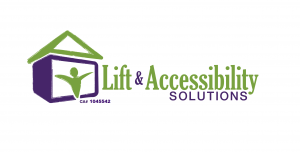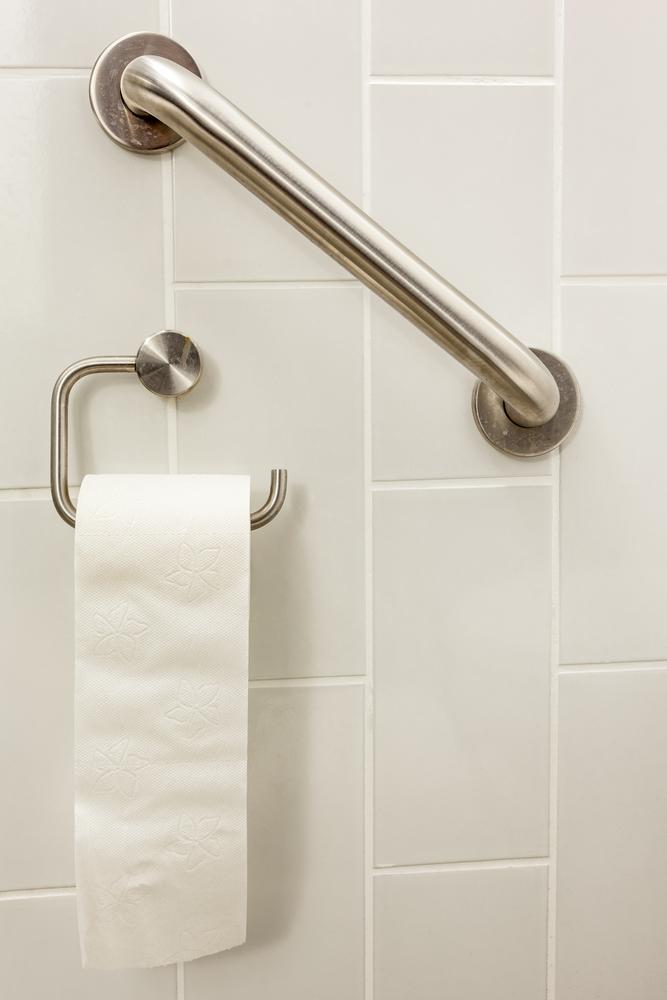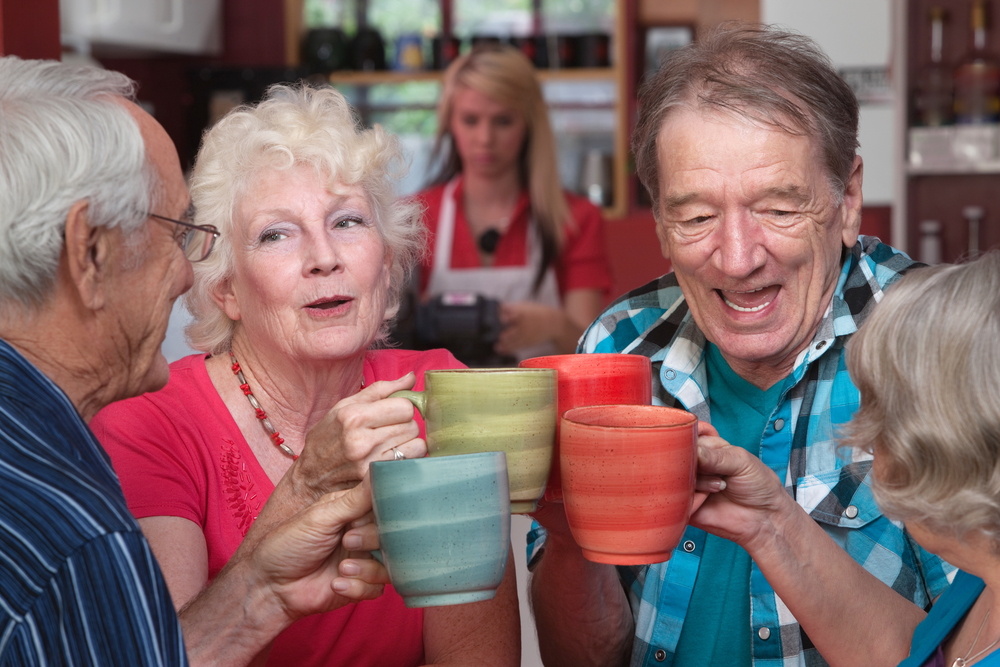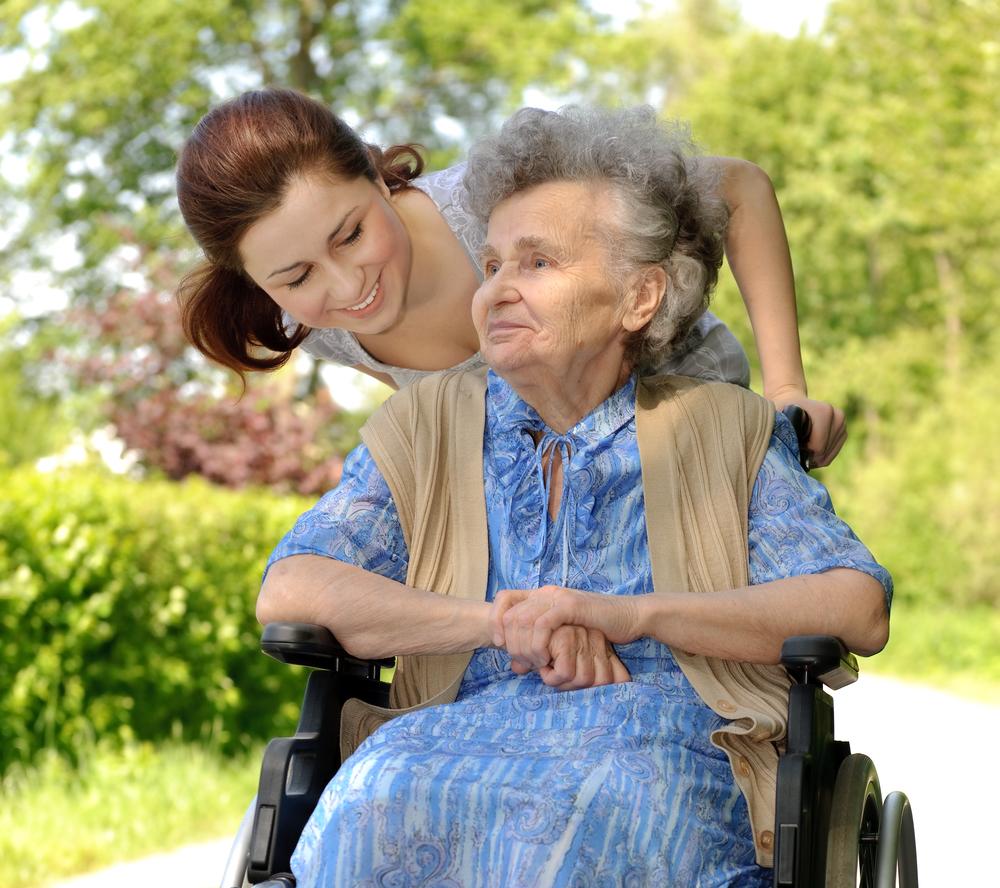03 Jan / 2017
Disabled? Think You Can’t Be Athletic? Think Again.
The new year is a perfect time to try and make some life changes. If you’re like many others, you’ve considered trying to live a healthier lifestyle. Eating better, changing some habits–these are all great starts. But one thing’s for sure: the best way to make this positive change is to begin an exercise program. But, what if you’re one of the almost 50 million Americans who suffer from some sort of disability? You might think that this setback makes it impossible for you to start exercising. Well, if that’s true, you need to think again.
Chances are you’ve never heard of Mark Inglis. Or Phillipe Croizon. In fact, most people will probably never hear of these individuals. And yet, for those people who go through life with some sort of disability, these men’s names (and many like them) should be names they are very familiar with. Why? Because these men never let their disabilities stop them from achieving their dreams, and both went on to accomplish spectacular feats. Mark Inglis, a double amputee, climbed Mt. Everest in 2006. And Phillipe Croizon, who lost all of his limbs in an accident many years ago, successfully swam the English Channel in 2010. Stories like these–and these two only scratch the surface–just go to show you that, regardless of the obstacles you might face in life, you can accomplish anything if you put your mind to it.
Of course, living with a disability does present some obstacles, and depending on your specific situation, the things you want to accomplish might change. Regardless of what you decide to work on, here are a couple of things to keep in mind:
- Consult a Doctor or Physical Therapist First. This is always good advice, but just make sure your healthcare professional is aware of your new exercise program, and gives you the greenlight to begin. They might even have a program in mind that you should start.
- Look For a Disability Exercise Group, or Start One. Chances are, you’re not the only one in your area with a disability who’s looking to get healthy. By joining a group, you can find the support and help that naturally comes from joining, coupled with knowledgeable people who are able to help you get the most from your unique situation.
- Don’t Strain Yourself. This is another good piece of advice for everyone, but one that resonates even more when a disability is involved: don’t overdo it, especially when you are just starting out. This is a common mistake, and one that can lead to further problems in the future.
So, as you begin a new year, think about what you want to change in your life. And whatever you do, don’t think that having a disability somehow disqualifies you from living the life you wish to have. Remember Mark Inglis, Phillipe Croizon, and the millions of others who have made the decision to not let their disabilities slow them down, and then make the same choice.
19 Dec / 2016
Tips for Socializing if You Have a Disability
Whether as youths, adults, or seniors, people with disabilities or special needs find it difficult to engage in many activities that would otherwise allow them to interact with other people. It can be easy to feel left out because you don’t think you can participate in the same things non-disabled people “typically’ do for fun. But at the same time, it’s important to recognize that many of the things holding you back from socializing are mental, and can be overcome. If you have a disability and want to know how to socialize better, here are a few tips:
1. Understand your limitations, but don’t let them hold you back.
If you have a physical disability, you may not be able to necessarily participate in sports the same way as others, or go hiking or dancing without having to make special preparations. But at the same time, don’t let that hold you back from the things you can do – like finding another way to play your favorite sport, or meeting new people at an activity that doesn’t require a lot of physical activity.
2. Build your socializing experience around activities.
The best way to build relationships with people is around shared interests, and this stands true for those with disabilities as well as those without. If you want to socialize, try doing something you love, whether that be volunteering, taking a cooking class, or touring a museum. That way you can talk to people who are interested in the same thing you’re doing, and have a conversation starter if you’re unsure where to begin.
3. Answer questions if people genuinely have them.
If people that you talk to are curious about your disability, take time to answer their questions, as long as they are being respectful about it and show a genuine interest in understanding you and your perspective. This will help facilitate easier and more natural conversation that you can both be comfortable with.
4. Look for special mixers in your area.
If your area has mixers specially for people with disabilities, consider going to one. You may be surprised at who you meet there, and you don’t need to feel like you disability is your identifying marker, either – have a conversation with someone without thinking about how you are different.
10 Dec / 2016
How To: Proper Grab Bar Installation
If you’re looking for a way to make your bathroom safer for yourself or a loved one, a shower grab bar may be just what you need. This bar can be affixed to your shower wall in order to prevent slips and falls, providing an extra level of security when taking that first step onto a wet surface. If you are unsure about how to properly install a grab bar, however, don’t let this hold you back – this article will describe the process and help you make sure it goes as smoothly as possible.
1. Anchor your grab bar to studs.
In order to make sure that the grab bar is correctly affixed, you’ll need to start out by looking for studs, which are vertical framing members found in typical wood-framed walls. Using a stud sensor, mark the location of each stud lightly with a pencil, then probe gently with a nail to find where the edges are and mark those as well. If you have a tile shower, you’ll need to do this above the edge of the tile. Using a level, extend these marks down to where you will be positioning the grab bar, and place masking tape along the sides to indicate this.
Hold the bar that you will be installing over the masking tape and mark the places you will be drilling holes; you’ll probably need three screw holes for each mounting flange, though only two of them will most likely fit on the stud. Then, you’re ready to drill using a ⅛ in. glass-and-tile bit, starting with the mark at the center of the stud. If your drill goes through solid wood, you’ll know you’re on the right track and can keep going.
2. Fasten the grab bar.
You are now ready to proceed with actually installing the bar! A plastic anchor can make up for the screw hole that does not fit on the stud. Then, caulk each mounting flange for extra security when drilling. Finally, firmly fasten the grab bar into the holes you drilled previously with stainless steel screws.
3. Test it out.
Before you’re ready to call it a day, make sure to pull on the grab bar and check that it is secure. Don’t hold back, as you’ll want to make sure that the bar will stay in the wall even with the strongest pressure exerted on it (for example, from someone falling). If it holds up, you can congratulate yourself on a job well done!
30 Nov / 2016
What You May Not Know About Barrier-Free Showers
Many people are deciding to replace their old bathtub showers with barrier-free showers nowadays, and not always for the reasons you might think. When most people think about barrier-free showers, they think of them as being installed for safety concerns, usually for the elderly. While they do provide a great deal of safety and ease, they can also create a stylish, spa-like bathroom.
If you are unfamiliar with the concept, barrier-free showers are walk-in showers that have no curb over which you have to step to get into the shower. They are a great alternative to traditional bathtubs, and more and more people are going that route. Since most people rarely use their bathtubs in the traditional, soaking bath way, many are finding a sleek, safe and easily-accessible alternative in walk-in, barrier-free showers.
Benefits of Barrier-Free
There are many obvious benefits of going barrier-free, but many people are hesitant about getting rid of their bathtub. If you have small children or take baths often, barrier-free would not be for you. However, if you are like many of us who only take showers, you could consider some of these additional benefits of going the walk-in route.
- Safety: This is one of the primary benefits of barrier-free showers. Without a curb or lip to step over when you get in or out, the risk of falling is greatly reduced.
- Easily Accessed: Similar to the safety benefit, barrier-free showers are just easier to enter. This may not seem like a big concern for some, but it is a big deal to those in a wheelchair or have other mobility problems. It also comes in handy if you ever twist an ankle or have any other leg injury that hinders your movements.
- Style: This is the aspect that many people do not realize. Barrier-free showers provide a sleek, European look that will help modernize the entire bathroom.
What to Consider
If you have decided to go barrier-free with your shower, there are a few things to consider before the installation. You need to decide upon the depth of the base, the width of the opening and the type of tile to be used. You also need to consider the texture you want for the tile and a few other small details. Most importantly, make sure to select an installer who is certified and experienced in the installation of them. Unless you are a professional yourself, you will almost certainly overlook some aspect, and a certified professional will be familiar with every step of the process.
22 Nov / 2016
A Brief Overview of Walk-In Bathtubs
Every year more than one third of senior citizens will take a fall in their homes, with some 80% of those occurring mainly in the bathroom. Bathrooms are exceptionally hazardous due to the many surfaces that can be so slippery. One place in particular which causes so many issues is the bathtub. Super slick surfaces in bathtubs make for poor grips and lead to slips and falls. Those who have limited mobility struggle the most here. Walk-in bathtubs make a great solution. Here are a few things to keep in mind as you set about installing a walk-in bathtub in your home.
Make Sure You Research Tubs
One tip that may seem most obvious is to do your research about the tub you want and that will fit your home the best. You will need to evaluate if you need a tub with wheelchair access, if you want one with a built-in bench, or any number of other features. Typically, the biggest benefit of a walk-in bathtub is that there is a door, with a tight, waterproof seal, which opens either in or out to help you easily step into the tub. Some tubs come with jacuzzi jets, special mobility assistance safety handles, or fold down seats. Grab bars and handle could be installed around a tub without these features, if you want a model that doesn’t feature them. Evaluate your space and your needs; it’s a good idea to also consult a specialist or your doctor to properly understand your needs.
Ask Your Friends and Family
Many people, particularly if you are a senior citizen yourself, have friends who may have already installed a walk-in bathtub. Ask around; there are bound to be people in your life who have used or who have their own walk-in tub. For those who may not know someone with their own walk-in tub, however, you can always do plenty of research online. This is pretty similar to the first point: check online reviews of different bathtubs. Once you understand your needs and have evaluated your wants and balanced these against a budget, then set about figuring the best bathtub for you by looking at product customer reviews on at least three different websites.
Budgeting
Remember to set a budget and stick to it! As in any aspect of our lives, budgeting is often the hardest. But you’ll find that in your search for your personal Goldilocks tub that is just right for you, you will be much happier in the long run if you set up a generalized idea of what you want and how much you can actually afford. This will even be beneficial because it will help you weed out tub candidates! While it is highly beneficial to have a walk-in bathtub, it doesn’t make sense to go completely broke over it. Be aware of what you really need and what will best fit your personal tastes, style, and financial situation.
14 Nov / 2016
Caregivers – It is Okay To Have Down Days
As a caregiver, your life is dedicated to helping another person. There’s no doubt that the job you do is important, and that you’re able to make a real difference by being there for that person and helping him or her with the necessary tasks to live daily life. At the same time, being so invested in your job can be damaging – it can take a toll on your health, your personal life as well as your emotional wellbeing. Many caregivers get so caught up in what they are doing that they don’t stop and notice the way that their job is affecting them, while others feel guilty for thinking of themselves when their task is to focus on helping someone else. Adding to this is the issue of attitude: it may seem sometimes like you have to be 100 percent ready to go all the time, always cheerful and always ready to give it your best no matter what you are going through personally.
It is important to remember that caregivers are people too. Just because your job is to help someone else does not mean that you can – or should – suddenly forget about yourself and your needs. Let’s address the struggles that caregivers go through, and how to get past them, one by one.
First, the idea that you need to put on the cheerful face all the time is simply not true.
It is perfectly okay to have “down days” – times when you’re just not feeling up to the task, or days when you don’t necessarily see everything in a positive light. Though you want to make sure that not all of your days turn out like this, you shouldn’t feel the need to suppress unhappiness in order to fit a mold, as that will only serve to make you more uncomfortable.
Second, the problem of guilt – why should you bother with your own desires when someone else clearly needs your attention more?
The answer is simply that you matter – you’re a human being, with your own problems and your own wants. You deserve to get the benefit of self-care as much as the person you are helping. Furthermore, you are better able to take care of another person when you have first taken care of yourself, emotionally and physically.
So now that you’ve acknowledged this truth, how should you go about tackling your “down days”? Every now and then, schedule a break for yourself – take a day and go somewhere you enjoy, like the beach or the park. You can go by yourself, or with a person you love – just make sure that you do whatever is necessary to schedule that time into your busy schedule on purpose. Write it down in your calendar, set a reminder on your phone, do whatever you have to do. Otherwise, it’s easy to forget or brush it off as not important. Also make sure that you are getting enough sleep and taking the time to do something that relaxes you every day, like reading or meditation.
02 Nov / 2016
Socializing for Seniors
Whether you decided to research this topic for yourself or for a parent or other aging loved one, this can be a rather sensitive issue. There isn’t quite the same system or network of safety and reliance for senior citizens as there exists for young people. In fact, it is highly likely that those of the baby boomer generation (age 65+) are only going to become more lonely as time goes on. You probably know from your own life experiences that feelings of loneliness are awful; that pretty much goes without saying. But as you age and you become more isolated, those feelings of loneliness can compound and multiply and are “linked to poor cognitive performance and quicker cognitive decline.” To help you and/or your loved one through this time of life, here are a few tips to help maintain a healthy level of social involvement.
1. Volunteer
There are plenty of places needing volunteers: libraries, museums, theaters, hospitals, dog shelters, etc. Especially if you are new to retirement, volunteering is a great way to keep moving but without all the pressures of a 9-5 job, or whatever other form of work you dealt with.
2. Keep Learning
You may feel a little out of place going back to college, but you can also look into adult education classes at your community college or volunteer with AmeriCorp’s Senior Corp. If you sign on for continuing education classes rather than traditional college courses, these are much more likely to be full of adults middle aged and older. This is a great way to keep your mind sharp by learning a new skill and help you keep up with your socializing to help combat loneliness. It will also help get you out of your home several times a week and make you socialize with people you likely would never have met otherwise. It’s a winning situation no matter how you look at it.
3. Get Moving
One great thing about being a senior is that loads of places offer discounted or even free admission or memberships. Some places to look into might be dance companies that offer classes, universities (such as a nearby community college), or even your local rec center or gym. There are tons of low-cost options for gym memberships now too. When you move your body, studies have shown that sports, especially dance, help to create new neuro pathways in your brain and strengthen old ones, fighting against dementia. And taking a social dance class, in particular, will help ensure that you meet some new people and make plenty of friends.
26 Oct / 2016
Taking Care Of The Caregiver
We all know a caregiver in our lives. This is our sister, our mother, our father, our brother, or other family member or friend that puts their life on the back burner to care for an ailing loved one. It may even be you. The point is that caregivers give so much of themselves to the person that they are caring for that they don’t often take care of themselves. In fact, 63 percent of caregivers report that they have poor eating habits, 72 percent of caregivers don’t visit the doctor as often as they should for themselves and are at an increased risk for signs of depression. Caregiving can be so stressful that it can take years off of their life. The time is now to offer a lift to the caregivers in your life.
Taking Care Of The Caregiver
Dinner Time
Since nutrition is often something that caregivers skip for themselves, treat them to a nutritious meal that they don’t have to cook. Cook dinner yourself or order something in. Take them out to dinner if you can find someone else to step into the caregiver role. You can even think about giving them a gift subscription to a healthy dinner service that sends all the ingredients and a recipe for a fresh and nutritious meal.
Give Them A Time Out
Now that you know the strain that this situation can cause, it can be a great time to give them some time to themselves. Take over for them, and push them to do something nice for themselves. This may mean just taking a bubble bath with music playing, going to sit at a coffee shop to enjoy a drink and a book, or anything that they enjoy doing that can be considered me time. Give them a certificate to your local spa or a gift card for their favorite store or restaurant that you make them use rather than put in a drawer to get dusty.
Handle Other Tasks
You may feel uncomfortable taking over the caregiver role to give your loved one a time out, so help them with other tasks. Clean the gutters. Scrub the stove. Organize a closet. Handle any of these tasks that they may be meaning to get to, but never get around to doing themselves.
It’s time to offer a lift to the spirits of our caregivers to help them feel that they need to start taking care of themselves again. These tips are a good starting point for what you can do for your loved one. You know them best, so think outside of the box for what you could do to make them stop neglecting themselves and start feeling good again.
19 Oct / 2016
The Benefits of Intergenerational Interactions
Making sure that you have great relationships with people outside your peer and age group are not only a lot of fun, but are also really beneficial for your mental, emotional, and social health. Just as there are tons of health and social benefits of engaging with your peers.
At first thought, both youths and seniors may find the idea of mingling strange, but there are actually a lot of social, health, and interpersonal benefits of just this kind of intergenerational interaction. After trying it, many people of both age groups find it a remarkably enjoyable experience.
The Benefits of Intergenerational Interaction
As we make further advances in health science and medicine, people are living longer, which means that we are seeing tremendous growth in retired populations and senior living. With that, there is a huge disconnect that is naturally growing between younger and older generations.
Intergenerational programming is an official way to describe the organized events that take place between seniors and youngsters to form fun and meaningful relationships. There is so much that kids can learn from seniors, and plenty that seniors can get out of spending time with children.
Benefits of Intergenerational Interaction for Seniors and Older Adults
The quality of life for a senior raises dramatically when getting the opportunity to have fun with children on a structured basis. They get the opportunity to read to, teach, and interact with children while having some fun as well. This gets seniors and older adults up and moving so that they can burn some calories and get a little more activity during their day.
Seniors and older adults get the opportunity to learn more about technology and inventions of today from their younger companions. It gives seniors and older adults an enjoyable and engaging way to build relationships outside of their peer group, which helps stimulate brain wave activity and improve their memory.
Benefits of Intergenerational Interaction for Kids
The opportunity for kids and children to spend time with older generations has shown improvement in communication skills and social interactions within and outside of their peer group. It also helps kids with their critical thinking and problem solving capabilities, which can potentially raise test scores. This opportunity gives the kids positive role models to interact with which significantly lessens their chances of abusing drugs and/or dropping out of school.
Overall, intergenerational interactions are a great way to build enjoyable relationships, healthier individuals of all age groups, and stronger communities.
10 Oct / 2016
Care-giving Tips for Disabled Loved Ones
It’s true that caregivers, especially family members, can play a crucial role in the long term health of a disabled loved one, but it also takes a lot of responsibility and effort. There are different levels of caregivers, such as a child taking care of a parent, or a parent taking care of a child. Spouses can tend to each other, as well, if the needs arise. If you have a disabled loved one, and are planning on being a caregiver to them, there are some things you need to know to provide the care your loved one needs.
Tips To Provide Quality Care-giving To A Disabled Loved One
Research
Conducting some research on their disability can give you some insight on how to be an efficient caregiver. Finding out symptoms of a disability will give you an edge in providing your loved one’s needs.
Network
Finding other people who are caregivers can be a huge relief, especially to those without previous experience. They’ll be able to support you and give you advice on their experiences to help you become an excellent caregiver.
Encourage
You should encourage and support your loved one’s independence as it is extremely good for their attitude and health. Talk to them about what they feel you really need to do for them and how best to support them in what they can and can’t do. If you are concerned that you need to step in, broach the topic in the most respectful manner possible.
Keep Up With Advancements
New technologies become available every day to make disabled loved ones remain independent more easily. Join mailing lists and message boards to stay up to date on advancements and new techniques regarding your loved one’s condition.
Accept Your Feelings
Care-giving can be a roller coaster of emotions, and it’s important to understand those feelings and accept them for what they are. You should put yourself in a position where you are effectively caring for your loved one. Build a support system and allow times for you to take care of yourself so you can better take care of them.
Ask for Help (When You Need It)
Though you may be a primary caregiver, you should be aware of your limits. You should ask for help from other family members or doctors that are dependable. Make sure to find out your other family member’s needs before you ask, so you can both make plans you can stick to.
Provide Availability
If you’re the primary caregiver, but you don’t live near your loved one, you can set up a system so you’re notified of any emergency. You can set up an alarm system, manage doctor appointments, find a case manager, or hire local services.
Care-giving is a difficult task for anyone to take on, and it’s best to be prepared as much as possible. If you’re unsure about care-giving, or need some extra advice. Don’t forget to maintain your own health, for yourself and so taking care of a disabled loved one will be much easier.














